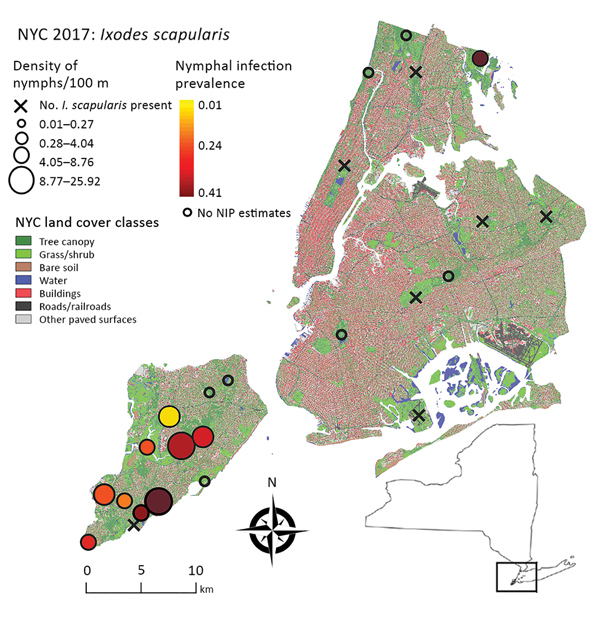Volume 25, Number 6—June 2019
Research
Enhancement of Risk for Lyme Disease by Landscape Connectivity, New York, New York, USA
Figure 1

Figure 1. Study area for analysis of Ixodes scapularis nymphal tick densities and Borrelia burgdorferi infection prevalence, New York, New York, USA, 2017. Open circles indicate parks where tick sample size was too low to estimate nymphal infection prevalence. Inset shows location of study area in New York state. NIP, nymphal infection prevalence; NYC, New York City.
Page created: May 20, 2019
Page updated: May 20, 2019
Page reviewed: May 20, 2019
The conclusions, findings, and opinions expressed by authors contributing to this journal do not necessarily reflect the official position of the U.S. Department of Health and Human Services, the Public Health Service, the Centers for Disease Control and Prevention, or the authors' affiliated institutions. Use of trade names is for identification only and does not imply endorsement by any of the groups named above.